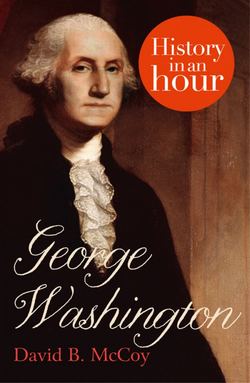Читать книгу George Washington: History in an Hour - David McCoy B. - Страница 7
ОглавлениеFrench and Indian War
Virginia was, at the time, part of The Thirteen Colonies of America. These were under the extended colonial governance of King George II of England, who reigned until his death in 1760, when his grandson, King George III, succeeded. In this part of British North America, the colonies had their own systems of local self-government, but the George II and George III ministries nevertheless defended their North American territory jealously against fellow colonialists, France and Spain.
As George Washington joined with Governor Dinwiddie, relations between France and Britain reached a critical point. For years, French trappers had roamed the area west of the Appalachian Mountains. However, in 1753, Governor Dinwiddie learned that French troops were moving south from Canada and constructing forts in the area south of Lake Erie. By this time, English settlers were beginning to push across the mountains, and Dinwiddie knew that if the French built forts throughout the Ohio Valley, it would block British expansion. His major concern was that the French would take control of the Ohio River – the main shipping route to the Mississippi River and ultimately the world.
On orders from King George II, Dinwiddie was directed to send a military envoy to inform the French they were trespassing on British soil and to return to Canada. The envoy he selected was twenty-one-year-old George Washington.
Leaving in November 1753, Washington and his small party faced a brutal winter, hundreds of miles of road-less forest, and hostile Indians. Despite these obstacles, they reached Fort LeBoeuf (Waterford, Pennsylvania) on 11 December.
Washington was warmly greeted by the resident French commander, Le Gardeur de Saint Pierre, and delivered the letter. Saint Pierre’s response was cool: ‘I do not think myself obliged to obey it.’ Upon Washington’s return to Williamsburg in January 1754, Dinwiddie had him write up a full report. This was then presented to the House of Burgesses (an assembly of elected representatives from the Virginia area), printed and sent to London, thereby establishing Washington’s international reputation.
In March 1754, Washington was sent back to the Ohio Valley to build a fort at the forks of the Ohio River. While carrying out this mission, he ambushed a French scouting party. One of the individuals killed was Ensign Joseph Coulon de Villiers de Jumonville, who was carrying out a diplomatic assignment. Convinced a larger French force would descend upon them, Washington ordered the construction of a makeshift stockade, Fort Necessity. When over 900 French and Indians attacked, Washington was outnumbered and agreed to surrender the fort and troops, on condition that he and his men retire with the honours of war. What Washington did not realize – because he could not read French – was that the surrender document stated that he, personally, had assassinated de Jumonville.
Regardless of the fact that the French and British were already on a collision course in the Ohio Valley due to the perceived threat by British expansion towards French territories, Washington was blamed for starting the French and Indian War. When news of Washington’s actions reached London, the politician and writer Horace Walpole wrote, ‘The volley fired by a young Virginian in the backwoods of America set the world on fire’.
Upon his return to Virginia, Washington learned that his regiment was to be disbanded and replaced with independent companies commanded by captains. Accepting command of one of these companies would mean losing his rank of colonel. Refusing such a humiliation, he resigned and returned to Mount Vernon. However, soldiering remained foremost in his heart. He yearned for a royal commission from London, but this now seemed out of reach. But in 1755, Major General Edward Braddock arrived from England, with two regiments of British regulars. Braddock had orders to settle the French and Indian issue by marching west, with overwhelming numbers to expel the French from Ohio County. As soon as Washington heard of this he wrote to Braddock to volunteer as an aide.
Despite his best efforts to convince Braddock that the ‘Canadian’ French and Indians would not fight according to conventional European tactics, Braddock rejected Washington’s advice and marched straight into a devastating pour of musket fire that lead to a large loss of life. When Braddock was fatally wounded, Washington took control by riding back and forth across the battlefield, rallying troops, and bringing order to the chaos. Despite having two horses shot from under him, and four bullets shot through his coat, Washington led the demoralized survivors to safety.
Impressed with the way Washington salvaged Braddock’s disastrous campaign, Governor Dinwiddie gave him command of all Virginia forces in 1758. For three years, Washington successfully defended Virginia against French and Indian attacks. He found the task maddening: the Virginian legislature did not fund him properly; recruits were poor quality; and despite his numerous petitions to London for a commission in the Royal British Army, it was never granted.
Though only twenty-six years old, Washington was the most experienced colonial military officer in all the Americas. He had learned to organize, train, drill and discipline men; he understood British, French and Indian battle tactics. He also knew that in war, being able to hold an army together was perhaps more important than winning every battle.
